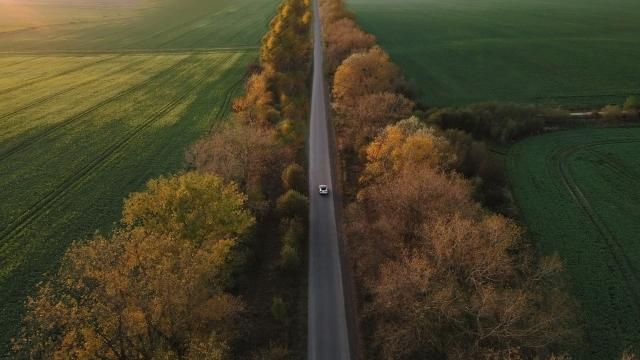Happy Earth Day, Tesla owners! A new project out of Australia may be the beginning of an alternative way to charge your electric car with solar energy.
The project is called Charge Around Australia, and it’s being led by University of Newcastle scientist Paul Dastoor and sustainable energy entrepreneur Stuart McBain, who are looking to drive 15,128 km around Australia using portable, printed solar panels. The project could be the first step in demonstrating other energy sources for electric vehicles to improve access to charging.
The problem with charging electric vehicles
Electric vehicles are getting more popular: EV sales rose 80% from 2020 to 2021, making up 7.2% of global car sales. As more electric vehicles get on the road, the apparent lack of chargers becomes a bigger and bigger problem. As the increase in charging stations lags behind the uptick in electric vehicle purchases, alternative charging sources (like solar panels) could be a new opportunity to power EVs.
Dastoor told Reuters that he hopes the project can help reduce “range anxiety.” In a world where there’s a gas station on every corner, some electric vehicle drivers — and potential buyers — may be concerned with the aforementioned lack of charging opportunities. This anxiety is the looming fear electric vehicle drivers may have that their car’s battery can’t get them to the next charger, which could keep people from driving electric vehicles long distances through remote areas, or dissuade them from purchasing one altogether.
“This is actually an ideal test bed to give us information about how we would go about using and powering technology in other remote locations, for example, in space,” Dastoor told Reuters.
The drive around Australia
The journey will take place across 84 days, and begin in Newcastle in September. The team will rely on 18, 17.98 m solar panels that can be rolled out alongside the car to capture the Sun’s energy. The panels are made from PET, which is the same plastic used to make water bottles, and are printed with “water-based solar paint” on a printer that used to print wine labels.
Stuart McBain will lead the drive alongside Dastoor. When they need a charge, they can roll out the panels next to the car, and, when not in use, the panels will be stored in a suitcase that weighs nearly 45 kg. A support vehicle will follow the car “as the team’s mobile home and act as a field station,” per Charge Around Australia’s website. McBain and Dastoor will also be visiting 70 schools along the way to show off the new technology.
The major downside is that the drive will only be covering two hours of driving every day, and that will require six hours of charging–slow and steady I suppose.
